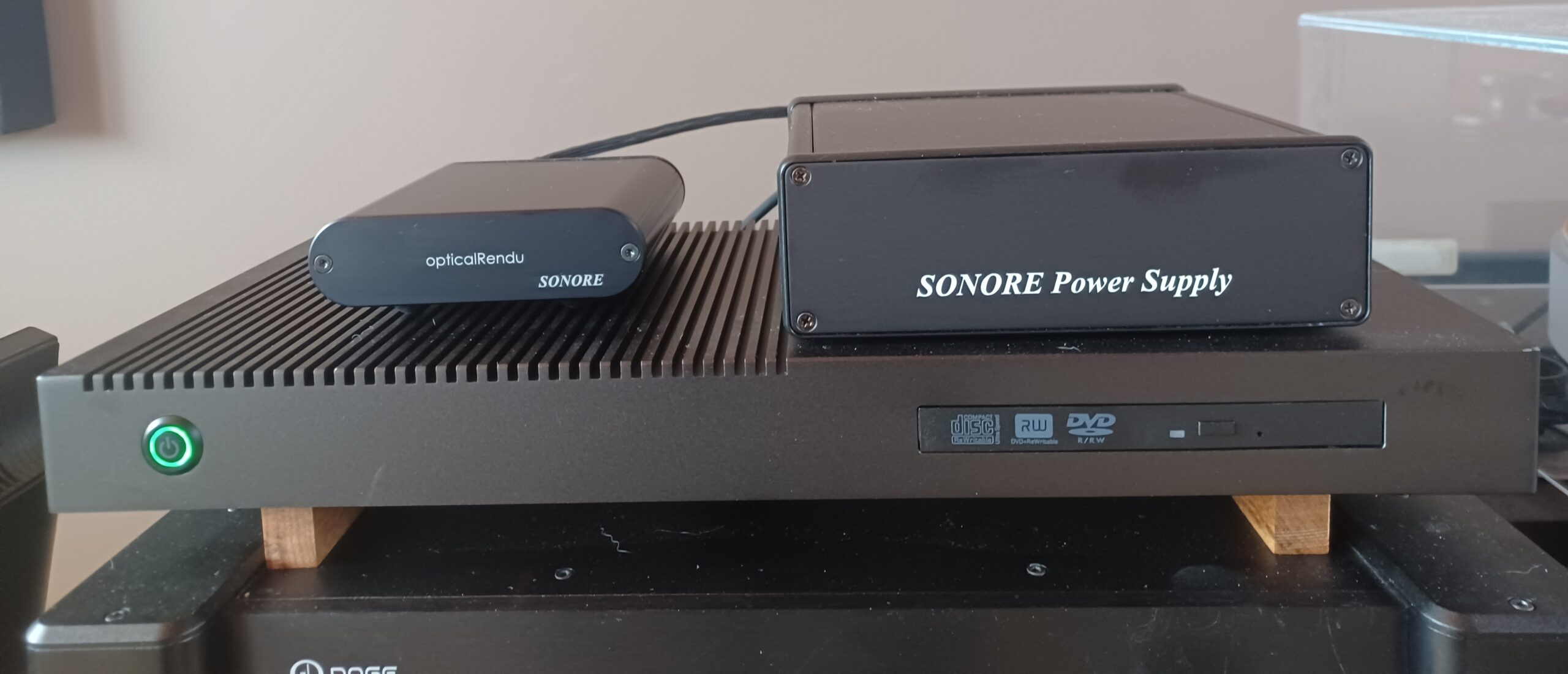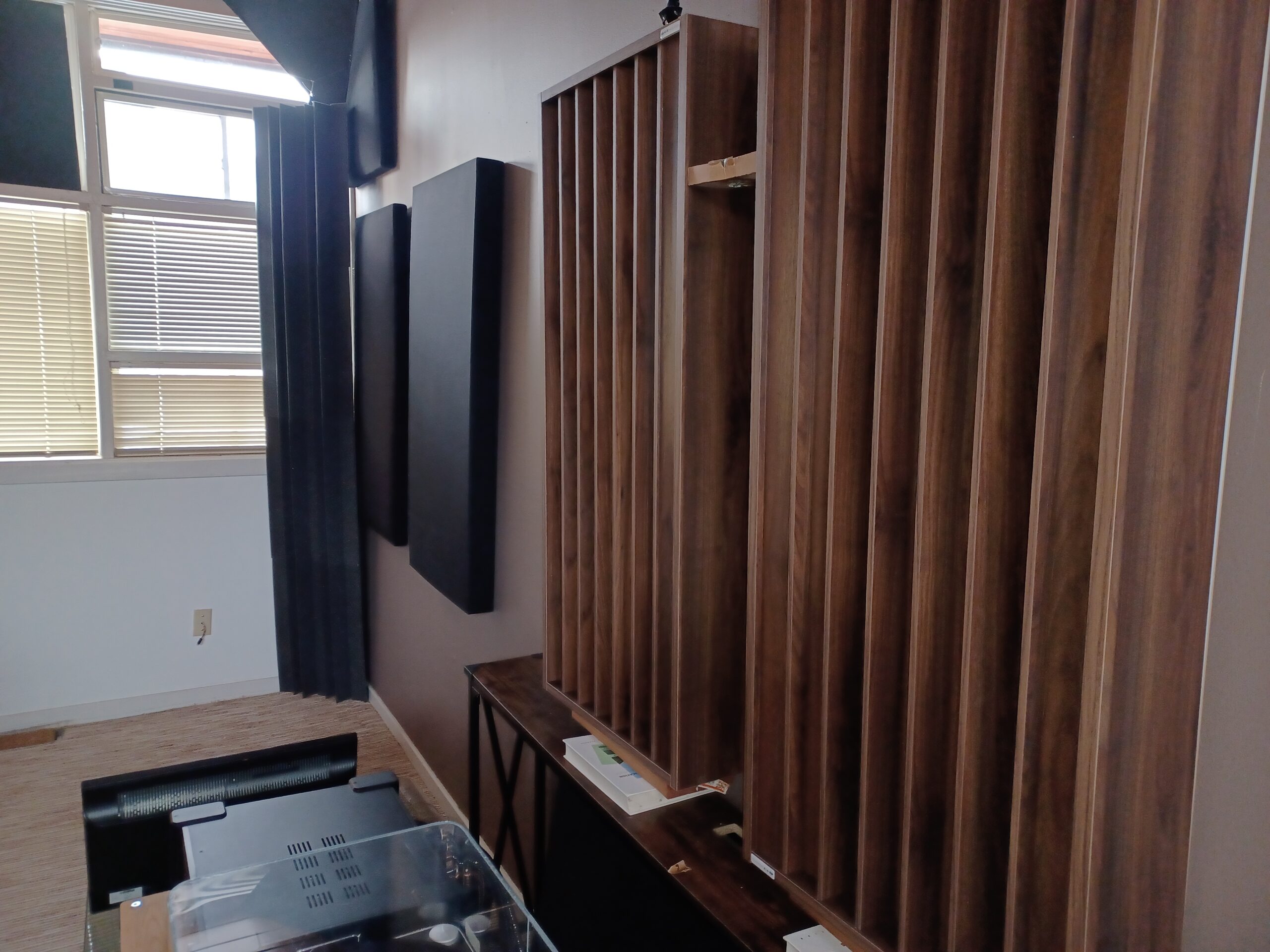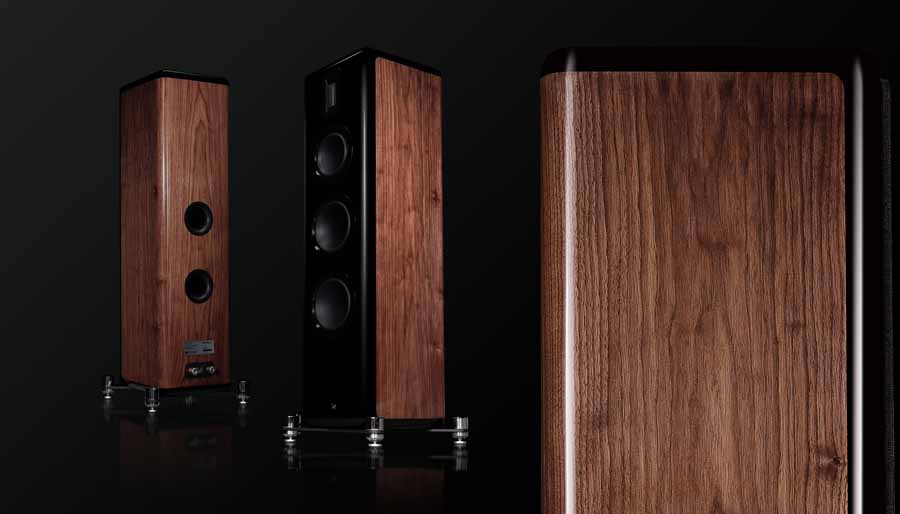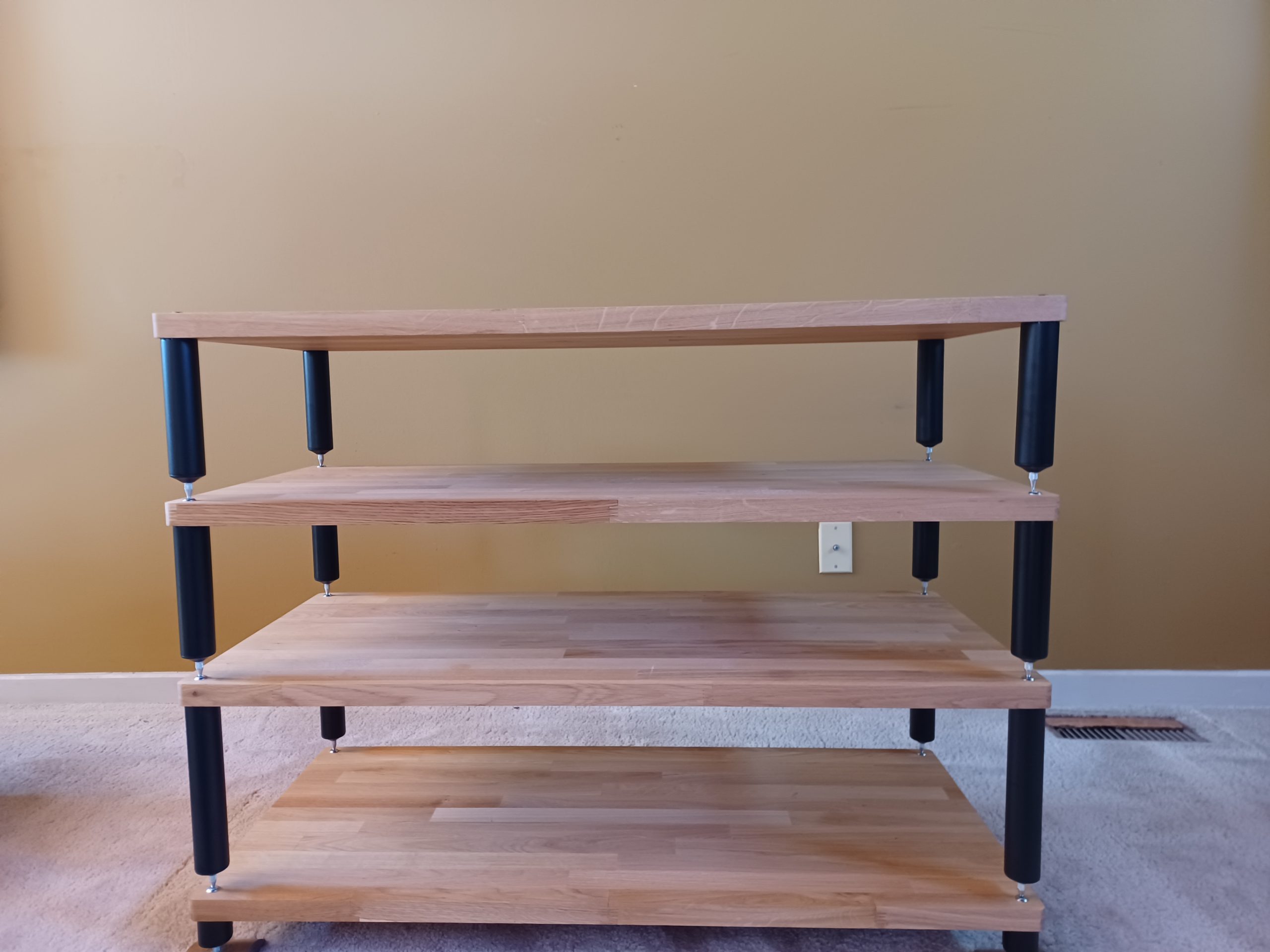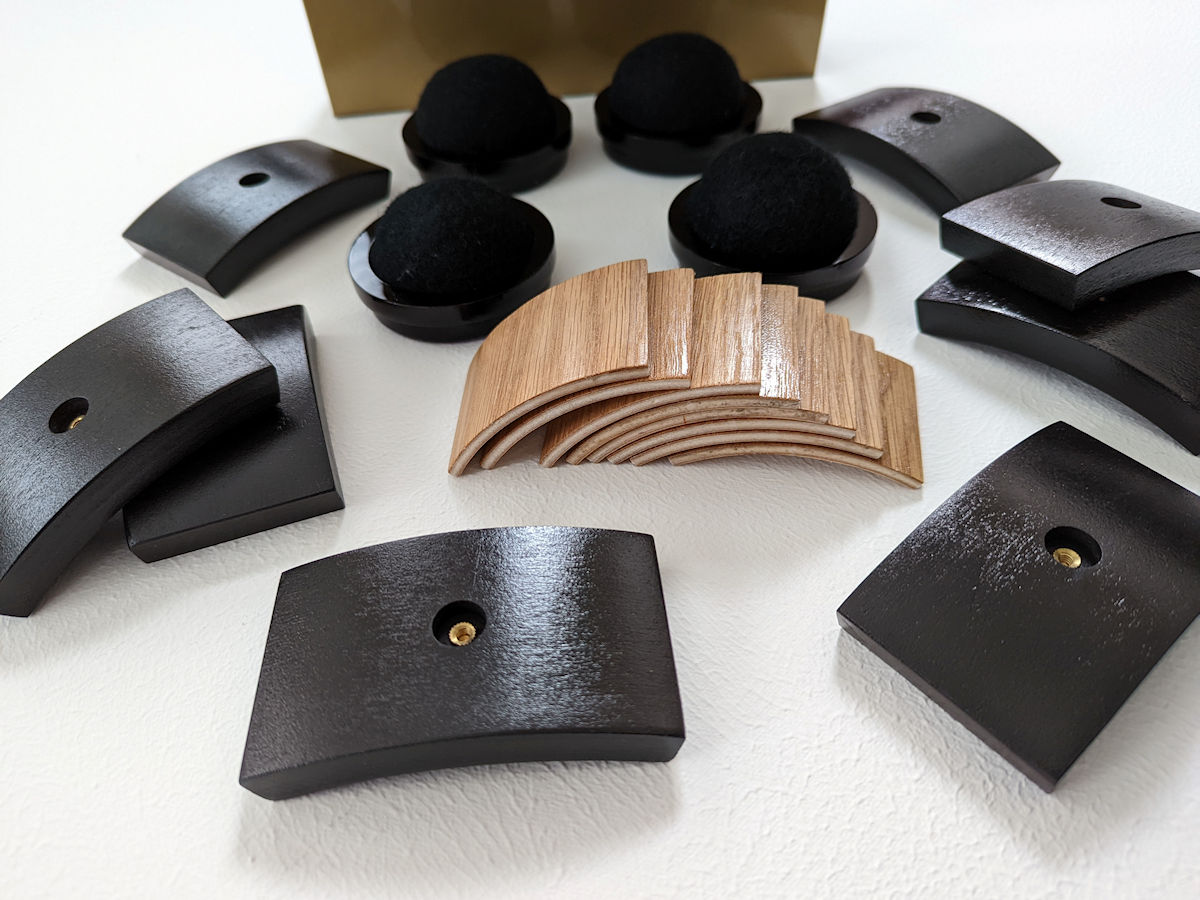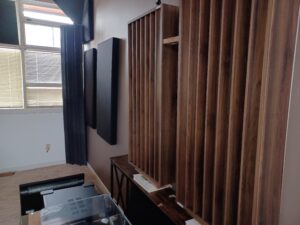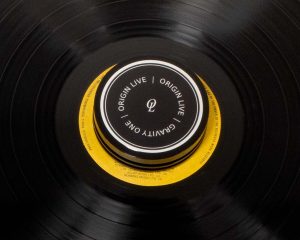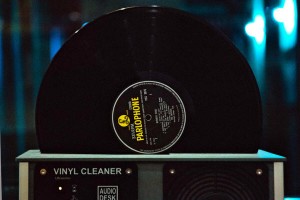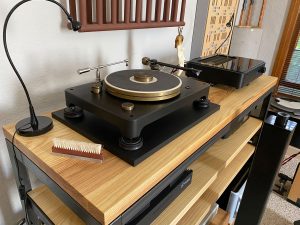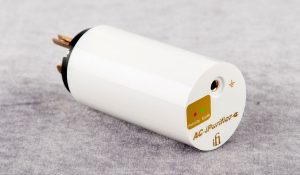A while back I found myself the new custodian of some excellent prototype speakers. I'd heard the Communique floorstander at several Colorado Audio Society listening sessions and really enjoyed this speaker. Built by MG Audio Design, which was mainly a cable company at the time, (Positive Feedback's own Pete Davey reviewed their Planus speaker and interconnect cables HERE, these speakers never went to market.) I asked Lee Matuszczak (the M in MG Audio) several times if he could build me a pair, but it was not to be. As it turns out, I must have had some good karma in the bank, because eventually Lee called and asked if I'd like to keep them for a while. I was stoked.
The former custodian was kind enough to give me the low down on how to extract the most performance from the Communiques. "Don't fool around, get the IsoAcoustics GAIAs, install, and place the whole lot on a heavy platform if you have carpet." Ain't it great when someone else does the painstaking research and you get the benefit?
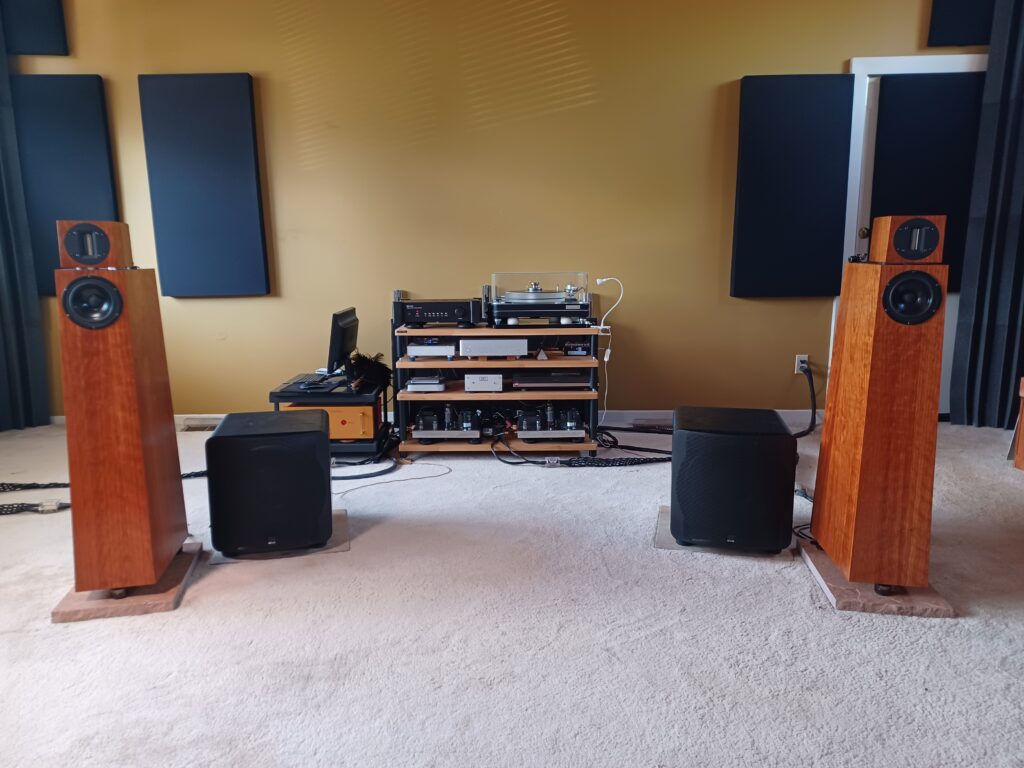
I knew a few other audio enthusiasts who were using the GAIAs and thought they really did their job, so I thought I'd document my experience with them. I immediately got in touch with Wendy Knowles, Head of PR for Focal Naim America, who distributes IsoAcoustics products, and she hooked me up with a review sample (with help from PF Editor-in-Chief Dr. David Robinson). Not all GAIAs are created equal, and you need to select according to weight. Since the Communiques weighed in at about 55 lbs. per speaker, I chose the GAIA III, which maxes out at 70lbs. According to IsoAcoustics, "The weight limits specified by IsoAcoustics are based on the performance curve. The performance of the isolation is declining as the weight approaches the specified weight limits and performance decreases more the further the weight limit is exceeded."

I decided to try a piece of local heavy flagstone I used to use as an amp platform for the speaker bases. It measured 24 x 18 inches. Not an easy task, but I cut it in half. First I gave the Communiques a week or so of listening with their stock spikes installed on top of the heavy stone platforms to get a good reference. Not bad at all. Before the GAIAs arrived I thought: "I could live with the stock spike configuration happily, but hey, wouldn't it be great to squeeze out a little more performance, a little more life?"
Once they arrived, installing the GAIAs was fairly easy. Read over the install instructions, screw on the lock nuts. Screw the GAIAs in, and make sure you position the logo to center front or center rear for optimum performance. I chose to position the GAIA logo on the front footer, and the two on the back of the speaker to the rear since the Communiques also have drivers that face rear. IsoAcoustics includes a handy little tool that makes tightening and adjusting easy. With a floorstanding speaker—especially one that has only three feet, and a free-standing tweeter module on top—get a helper to hold the speaker when tilted. That's about it unless you need to level or tilt. I thought I would need to tilt the Communiques down a little since the tweeters were now a few inches higher, but as it turns out I didn't. Easy. The GAIAs adhered well to the textured stone surface, proving correct the quote I found on the IsoAcoustics site: "IsoAcoustics products are designed to connect to the base of the speaker and to the supporting surface so that the energy is effectively managed by the internal isolators. The shape of the isolators creates a suction cup effect on smooth surfaces or provides a strong friction grip if the surface is textured."
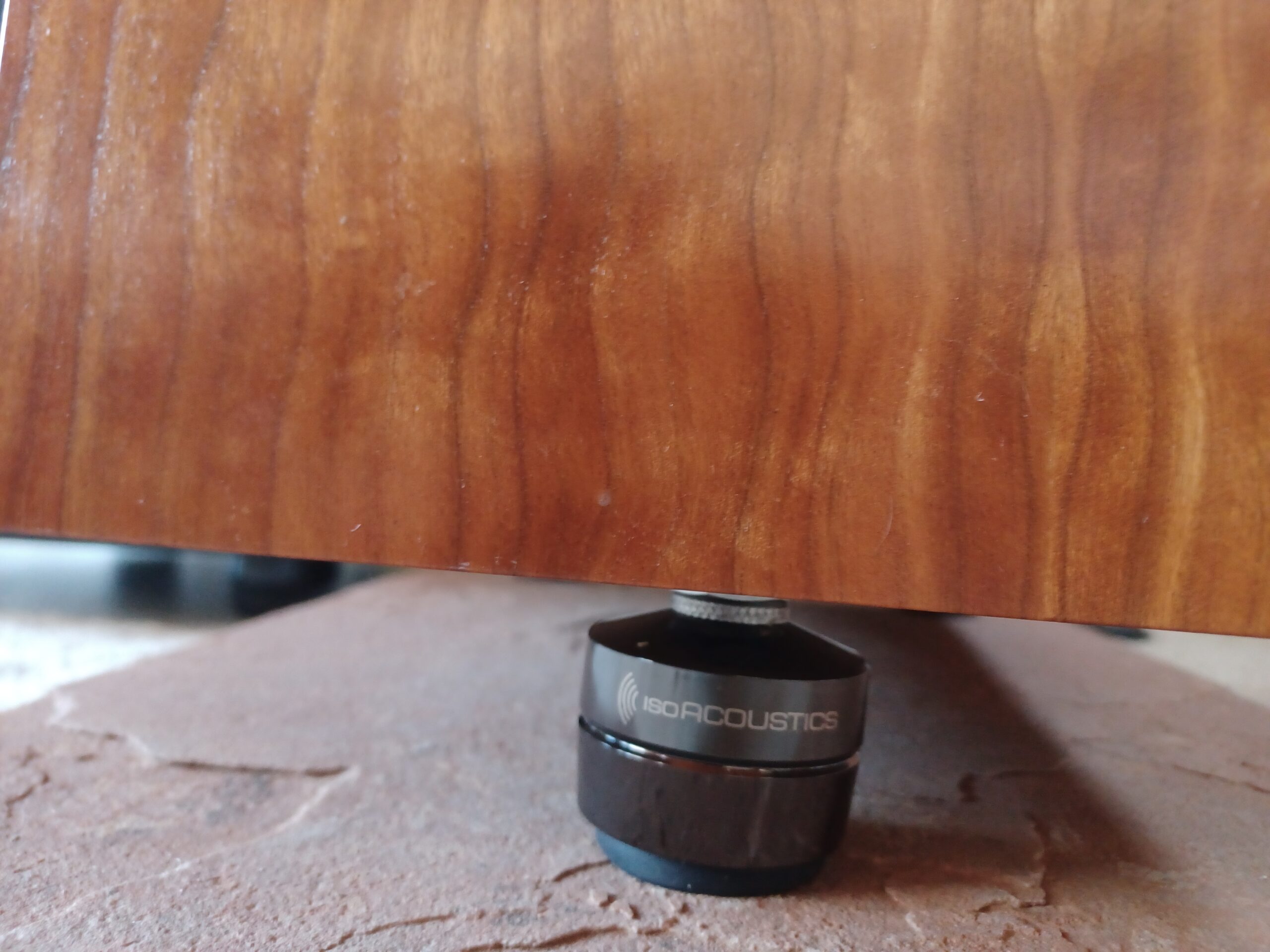
IsoAcoustics has been around since 2012 and the GAIAs have been featured in Positive Feedback more than once. Robert S. Youman reviewed them HERE and Ed Kobesky gave his take on using them with a turntable HERE.
I think it would be possible to fill many pages with technical descriptions on the GAIAs, but I found some info on the IsoAcoustics site that should suffice for this review: "The IsoAcoustics award winning patented isolation design manages the energy of the speaker to provide the best speaker performance. The effectiveness of the isolation is a result of the shape, thickness, durometer and characteristics of their proprietary isolation material and the way the top and bottom isolators function together with the internal insert to manage vibrations. IsoAcoustics stands are directional and designed to be positioned with the logo facing in the same direction as the motive forces of the speakers. As a result, they manage the energy on-axis as opposed to homogenous materials that allow the speakers to oscillate in all directions. This method of managing the energy provides a high degree of isolation, improved sound clarity, focus and openness."
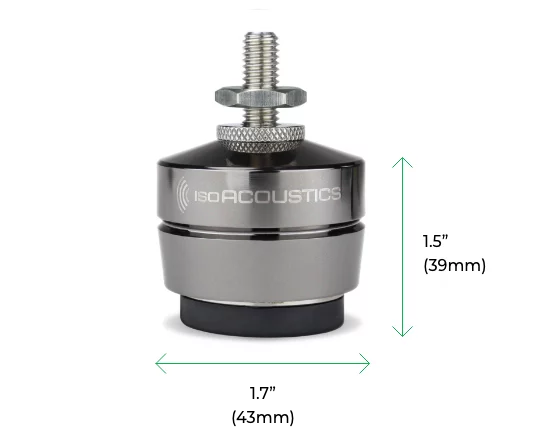
I was vaguely familiar with the significance of the name GAIA, but it's been a while since I've read any mythology. Steeped in the rich writings of ancient Greeks, volumes have been written about GAIA and all her variations, not only in Greek Mythology, but from different cultures all over the planet. From my readings I believe in simplest terms GAIA can be defined as life. I was hoping the GAIA IIIs would give the Communiques a little more life, vita, and anima.
All was now ready for listening, and I had a little nervous anticipation. Normally I like (and sometimes need) to listen to components in for review for at least a few weeks, and maybe months before I form a solid opinion. Not this time. From the first track I pulled up through Qobuz via Roon the audible difference was immediately pronounced. Like someone flipped a switch.
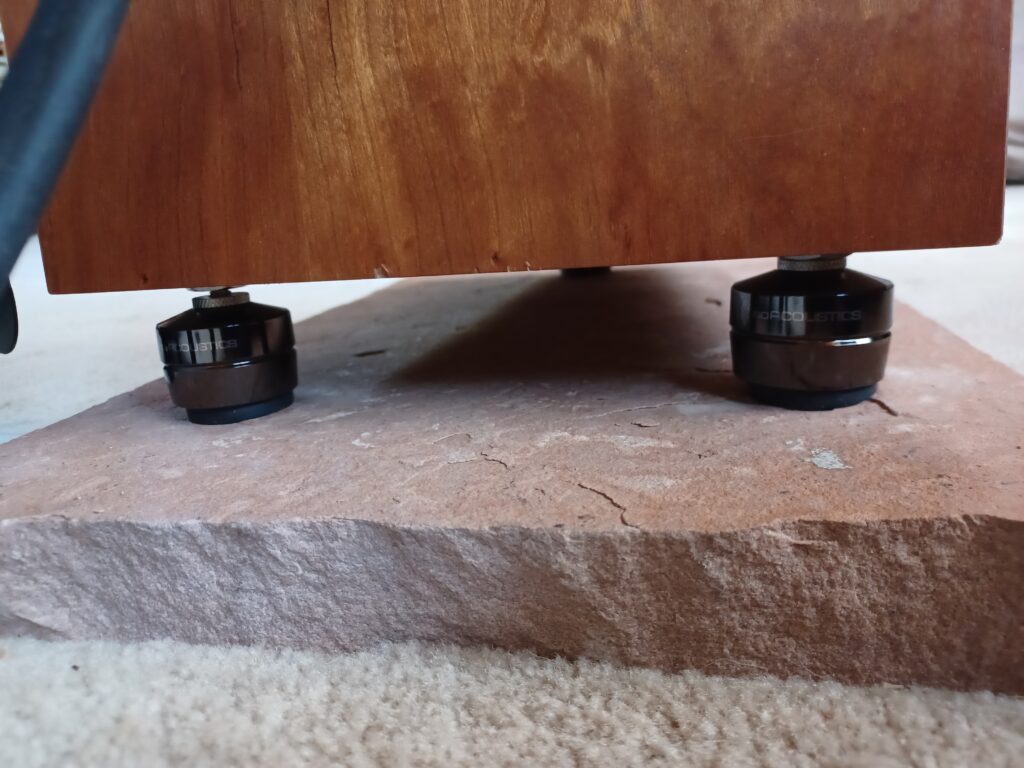
Impressions
The center vocal image became richer, wider, and more palpable. The vocalist seemed much more present in the room with me, and I noticed that the air and space that contribute to the illusion of a live voice. All the vocals I listened to going forward had a more believable aura, which lent more excitement to the music. The soundstage came alive with dimensionality and an increase of inner detail, especially in the far right and left portions. Like tiny celebratory Roman candles illuminating the space that was previously cloudy. Those far right and left portions of the soundstage also seemed to extend further, sometimes to the wall and beyond.
Another statement I came across on the IsoAcoustics site seemed particularly relevant: "Internal reflections are another consequence of speaker placement which can result in a loss of sound clarity and can cause sounds to become less three dimensional and spacious. Vibrations are inherent in the speaker, but any vibrations reflecting off the supporting surface and returning through any mechanical connection are a cause of internal reflections." So much of the time audiophiles deal with subtleties. While the differences the GAIAs imparted might be subtle to the average person, I think any experienced listener would agree with me that the improvements these isolators provide are not subtle.
Back to listening, I noticed the three-dimensional illusion that 2-channel stereo is supposed to create (and many times fails at) was closer to sounding authentic. The sense of air and space blossomed, and I felt the GAIAs came much closer to transporting me to the room where the musicians were performing. Spatial cues were more pronounced.
The more music I threw at the system, the more I felt the rhythm, bobbing my head, moving my feet, feeling good. It seemed the entire presentation was smoothed out, as though part of the presentation was somehow muddy or smeared prior to the GAIAs. Every frequency range seemed purer with less distortion. Bass seemed more agile. Not weightier, not more punchy, but it seemed to keep better pace with the mids and highs. Like it woke up from a snooze.

There was now a heightened vibrancy to the performance, with more distinct attack and a relaxed decay that make vocals and instruments sound more relaxed and genuine. Everything came across much more refined, removing detail smear, enabling the speakers to disappear even more than they did before. The GAIA IIIs provided an altogether more engaging musical experience.
On the IsoAcoustics web page titled "The Technology" IsoAcoustics touts the following improvements:
- Tighter bass
- Improved soundstage
- Greater sound clarity and openness
- Provides a three-dimensional image of natural spatial sound
My take? Yes, put a tick after after each of those. I would be surprised if anyone would disagree. In fact, the GAIAs surpassed (at least in my room) those four improvements.
Did the GAIAs live up to their descriptive namesake? No doubt, the GAIAs breathed more life into the prototype Communiques, resulting in the most engaging sound I've had in my room. Call it vita, anima, whatever you prefer, The GAIA IIIs gave the Communiques not a little more, but a lot more. I'm still discovering nuances that are pleasantly surprising. Every recording I listened to benefited from these isolators. From now on every time I hear a pair of speakers that aren't sporting a set of GAIAs, I'll be wondering: how much better could these be, or maybe more accurately, what am I missing? I'm also wondering how much better all my previous sets of speakers would have sounded if they were wearing these footers. If you really want to hear what your current speakers are capable of, try the GAIAs first before you get the upgrade bug, I think you'll pleasantly surprised.
IsoAcoustics GAIA III Speaker Isolators
Retail: $199 Per Set Of Four
IsoAcoustics




